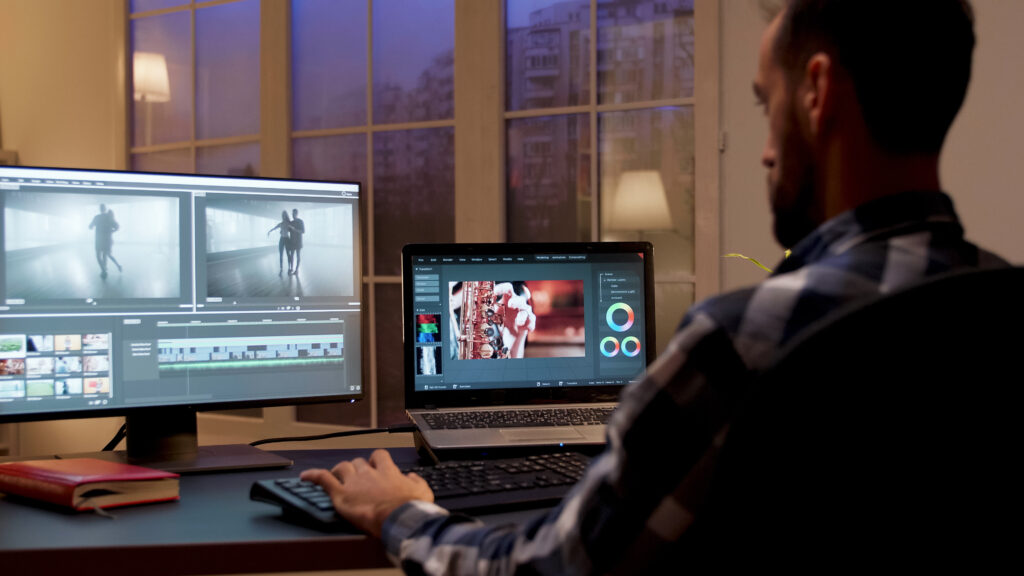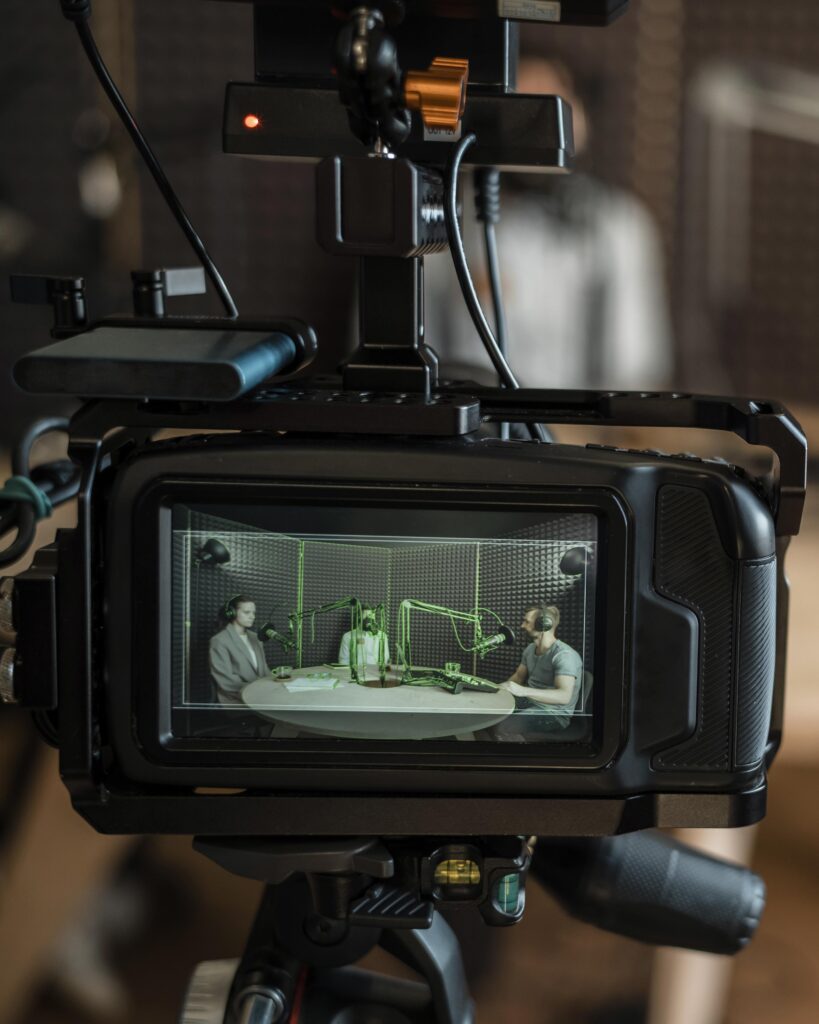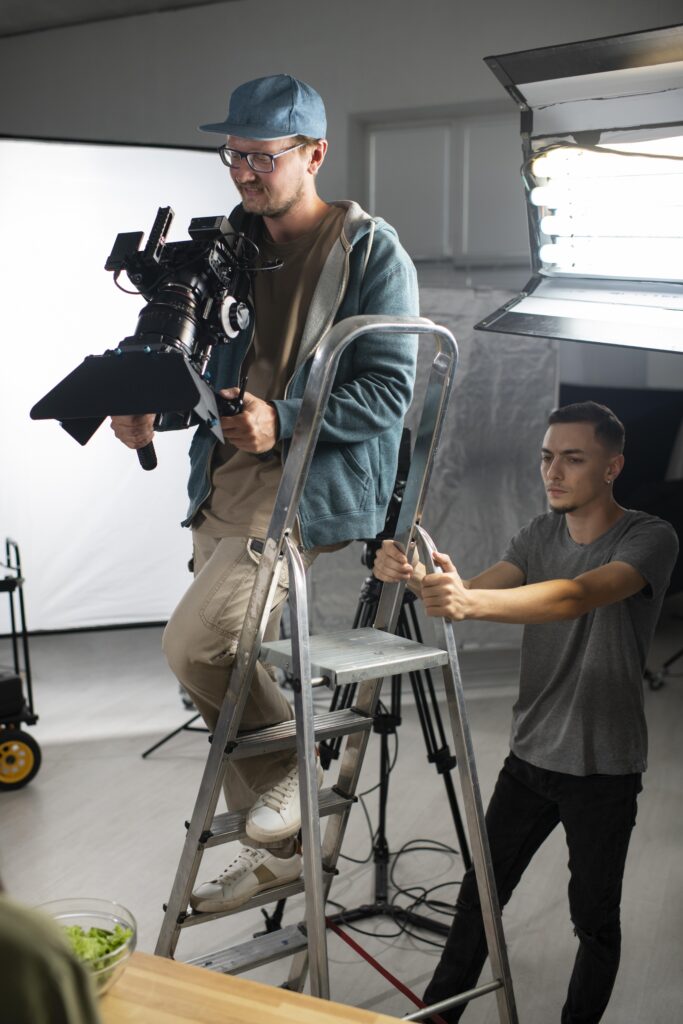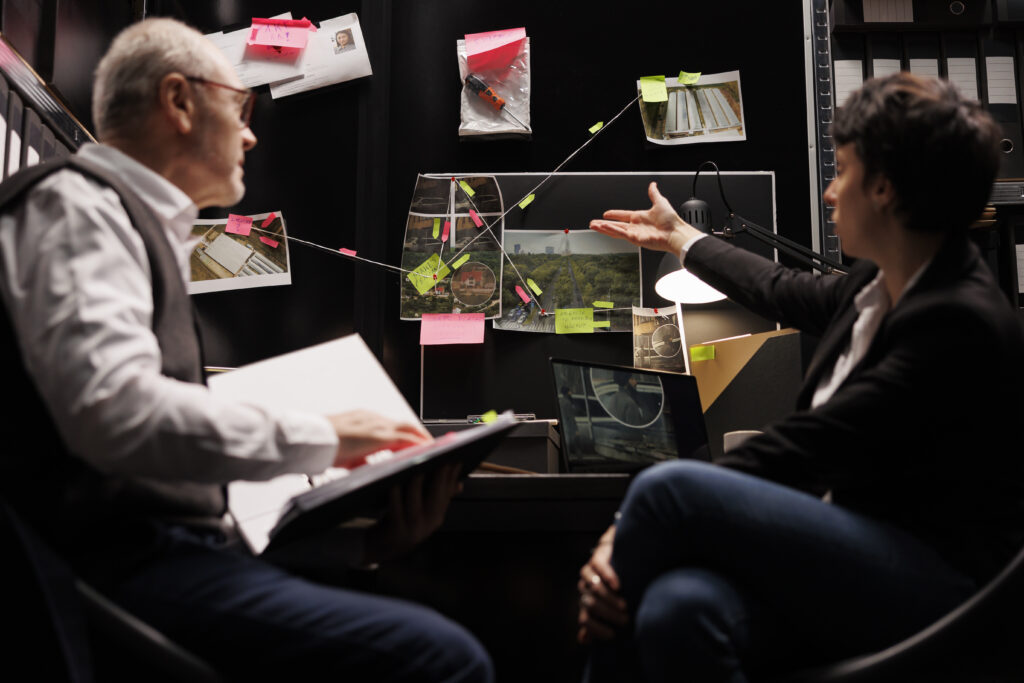AI-Driven Film Production: 7 Cutting-Edge Innovations
Artificial intelligence has emerged as a pivotal force in the ever-evolving film production landscape, catalyzing various innovations and reshaping the industry. From the nuanced art of script analysis to creating virtual production environments, AI is not merely an adjunct to human expertise but has become an integral component of the creative process.
As filmmakers and production studios harness these technological advancements, they encounter an unprecedented fusion of storytelling and computational prowess. This discussion aims to dissect the seven most influential AI-driven innovations quietly transforming the intricacies of film production.
Each innovation, a testament to the symbiotic relationship between AI and cinematic arts, hints at a future where the boundaries of what can be achieved are constantly redefined. As we peel back the layers of these technological marvels, one might wonder, what other untapped potentials of AI remain to be discovered in the realm of film production?
Key Takeaways
- AI-driven script analysis and automated video editing revolutionize film production by providing quantitative and qualitative perspectives in filmmaking, suggesting statistically more likely potential plot structures and character arcs to succeed, and enhancing technical elements like color correction and noise reduction.
- AI-powered editing tools and streamlined post-production workflows enhance efficiency, precision, and creativity in video editing, allowing editors to focus on the creative aspects of storytelling and fostering innovation in video editing narratives.
- Creative algorithms and intelligent visual effects streamline tasks like color grading and noise reduction, enhance efficiency, unlock new creative possibilities, seamlessly incorporate visual effects, and transform the creation of narrative-driven content.
- AI-driven revenue forecasting and trend analysis algorithms are refining marketing strategies, enhancing recommendation systems, streamlining budgeting, and revolutionizing the film industry’s evaluation of potential revenue. They also optimize decision-making in budgeting, marketing, and scheduling by processing vast amounts of data to provide actionable insights.
AI-Driven Script Analysis

Leveraging vast datasets to discern storytelling trends, AI-driven script analysis revolutionizes how filmmakers approach the narrative structure and character development within their scripts. AI, with its ability to process and analyze large quantities of data, offers a unique perspective in filmmaking—a quantitative and qualitative perspective.
Machine learning algorithms are applied to movie scripts, identifying patterns that have historically resonated with audiences. This enables AI algorithms to suggest potential plot structures and character arcs that are statistically more likely to succeed based on the analysis of successful past films.
Filmmakers such as Jon Finger are pioneering the integration of AI in storytelling by employing AI-generated scripts to create short films. This synergy of AI and human creativity is a mere augmentation of the scriptwriting process and a redefinition of storytelling paradigms. Through script analysis, AI provides actionable insights, ensuring the narrative is engaging and compelling while leaving room for the human touch essential to the creative process.
Implementing AI-driven script analysis tools streamlines the script development phase, offering a strategic advantage in producing innovative content that reflects audience preferences.
Automated Video Editing
Automated video editing represents a significant leap in film production. AI-powered tools are now integral to refining the visual narrative. These advanced algorithms expedite the post-production workflow, offering a combination of speed and accuracy that was previously unattainable.
Introducing creative algorithms into the editing suite not only enhances technical elements such as color correction and noise reduction but also prompts a reevaluation of the role of human editors in the creative process.
AI-Powered Editing Tools
AI-powered video editing tools are transforming the post-production landscape by automating complex tasks such as shot selection, color correction, and audio enhancement with remarkable accuracy and speed. In content creation, these advancements are not merely incremental; they represent a paradigm shift in the post-production process.
- Enhanced Efficiency: AI algorithms expedite editing by quickly sorting and recommending optimal shots from extensive footage.
- Precision in Post-Production: Tools like Izotope’s Neutron offer meticulous audio polishing, while Topaz Labs’ solutions upgrade video resolution through upscaling technologies.
- Generative AI Capabilities: AI tools for video editing can now generate supplemental content, such as background images, reducing the need for additional shoots.
- Creative Expansion: Editors can focus on creative aspects as AI handles repetitive technical tasks, fostering innovation in video editing narratives.
Streamlined Post-Production Workflow
The integration of artificial intelligence into video editing software has markedly streamlined the post-production workflow, elevating the editing process’s precision and efficiency. AI-powered tools are now capable of automated video analysis, significantly hastening scene identification and editing decisions.
This technological advancement expedites video footage editing and enhances the final product’s quality through sophisticated noise reduction and color grading techniques. Specifically, Izotope’s Neutron software utilizes AI to refine audio within the post-production workflow, ensuring a pristine sonic experience.
Concurrently, AI’s role in color grading transcends mere correction, allowing for creative and consistent visual storytelling. The cumulative effect of these AI applications is a post-production environment where the focus can shift from tedious technical tasks to creative storytelling and expression.
Creative Algorithms’ Role
Revolutionizing the post-production landscape, creative algorithms frequently expedite video editing by swiftly identifying optimal shots and streamlining intricate tasks like color grading and noise reduction. By integrating Artificial Intelligence (AI), these algorithms enhance efficiency and unlock new creative possibilities that complement human creativity. The synergy between AI and content creators is forging a new era in film production, notably in visual effects and automated story composition.
- Shot Selection: AI quickly sifts through hours of footage to find the best takes.
- Color and Audio Enhancement: Algorithms perform consistent color grading and audio refinement, previously labor-intensive tasks.
- Visual Effects Integration: AI seamlessly incorporates visual effects, reducing manual input.
- Text-to-Video AI: This technology transforms written content into visual storytelling elements, streamlining the creation of narrative-driven content.
Intelligent Visual Effects

Harnessing the potential of artificial intelligence, Intelligent Visual Effects have become a cornerstone in the evolution of film production, automating and enhancing complex VFX tasks to create more immersive and visually striking cinematic experiences. AI in Hollywood is not just a trend but a transformative force. The tools come equipped with advanced machine learning algorithms capable of executing tasks like rotoscoping and motion tracking precisely, which was once the exclusive domain of human experts.
As these AI-driven solutions integrate into the filmmaking process, they streamline operations and open up new realms of creative possibility. For instance, intelligent visual effects can analyze and synthesize data from multiple sources to produce seamless composites indistinguishable from reality. Furthermore, AI has revolutionized video upscaling, enabling filmmakers to enhance lower-resolution footage to meet the industry’s ever-increasing standards for high-definition content.
Analytical in nature, these advancements are scrutinized for their technical prowess and impact on cost efficiency and workflow optimization. The table below highlights key areas where AI is making significant inroads in visual effects:
| Aspect | AI Influence | Benefit |
|---|---|---|
| Rotoscoping | Runway AI Tool | Expedited Masking |
| Motion Tracking | Automated Precision | Enhanced Realism |
| Color Grading | Algorithm Optimization | Consistent Aesthetics |
| Video Upscaling | Topaz Labs Tools | High-Quality Footage |
Through these intelligent visual effects, AI is reshaping the landscape of cinematic storytelling, making the once-impossible now readily achievable.
Predictive Box Office Analytics

Predictive box office analytics, empowered by AI-driven revenue forecasting, offer a sophisticated toolset for gauging a film’s financial prospects. Through trend analysis algorithms, these systems scrutinize past and present market data to discern patterns that might influence a movie’s earning potential.
Audience preference prediction further refines this process by integrating consumer behavior models to tailor film marketing and distribution strategies to dynamic viewer demands.
AI-Driven Revenue Forecasting
AI-driven revenue forecasting leverages advanced algorithms to provide filmmakers with data-driven projections of a movie’s box office earnings, considering variables such as genre, cast, and historical trends. This analytical approach allows studios to:
- Analyze vast datasets for nuanced insights into audience preferences.
- Refine marketing strategies by predicting which demographics will respond best.
- Enhance recommendation systems to boost ticket sales through targeted promotions.
- Streamline budgeting by forecasting return on investment with greater accuracy.
Making the process more scientific, the impact of AI on box office forecasting cannot be overstated. By harnessing predictive analytics, the film industry is witnessing a revolution in evaluating potential revenue, ensuring that investments are strategically aligned with data-centric evidence for the highest probability of financial success.
Trend Analysis Algorithms
The film industry can use sophisticated trend analysis algorithms to forecast box office performance with unprecedented precision by evaluating myriad factors, from audience preferences to seasonal release impacts. Integrating AI and Machine Learning into predictive box office analytics heralds a new era for filmmakers and studios, allowing them to navigate the complex web of variables influencing a film’s market success.
By processing vast amounts of data, these algorithms provide actionable insights, leading to efficiency gains in budgeting, marketing, and scheduling. The technical prowess of trend analysis algorithms ensures a data-driven approach to decision-making, optimizing the use of editing tools and resources and minimizing financial risks.
This analytical framework is transforming the landscape of film production, making AI an indispensable ally in the art of cinema.
Audience Preference Prediction
Building on the foundation of trend analysis algorithms, the film industry is now leveraging AI to enhance predictive box office analytics through detailed audience preference prediction. This sophisticated approach reshapes how filmmakers understand and cater to their audience, significantly impacting the film industry’s future.
- Data-Driven Content Creation: AI and Machine Learning analyze vast datasets, allowing filmmakers to tailor their content to match audience trends and preferences.
- Enhanced Marketing Strategies: By understanding the capabilities of AI, studios can effectively target and engage with specific demographics.
- Strategic Distribution Planning: AI’s predictive power informs optimal release dates and distribution channels, maximizing potential revenue.
- Personalized Viewer Recommendations: AI-powered systems enhance the viewing experience by suggesting content aligned with individual preferences, thus fostering audience loyalty.
AI Casting Assistance

Revolutionizing the casting process, AI assistance employs sophisticated algorithms to meticulously evaluate and recommend actors, ensuring a precise fit for film roles. In the dynamic realm of Hollywood filmmaking, where the congruity of an actor with a character can make or break a production, the integration of Machine Learning into casting is a game-changer.
This cutting-edge technology parses through copious amounts of data, including previous performances, audience reception, and an actor’s range, to surface tailored suggestions with a previously unattainable level of accuracy.
The technical prowess of AI casting assistance is not solely about matching an actor’s profile with the character’s traits; it’s an analytical deep dive into the nuances that define successful casting choices. By leveraging historical and predictive data, AI tools provide a quantitative backbone to what was once a highly subjective decision-making process. The result is an enhanced filmmaking process that optimizes the allocation of roles and potentially mitigates costly casting errors.
Thus, AI’s role in film production extends beyond mere efficiency. It introduces a degree of objectivity and foresight into casting, a domain traditionally guided by intuition and experience, marking a transformative step in the cinematic storytelling landscape.
Virtual Production Environments
Harnessing the capabilities of artificial intelligence, virtual production environments are transforming the landscape of film production by creating immersive digital sets that allow for seamless integration of visual effects and live-action footage. This technological innovation is redefining the art of filmmaking and setting new benchmarks for the FUTURE OF FILMMAKING.
The integration of AI and Machine Learning within these environments enables a more dynamic and responsive film production process:
- AI algorithms assist in the creation of detailed and realistic digital backgrounds, reducing the need for physical sets.
- Machine Learning facilitates the real-time rendering of visual effects, which allows filmmakers to make immediate creative decisions on set.
- Virtual production environments foster enhanced collaboration, allowing for a more cohesive workflow between production departments.
- The inclusion of AI tools aids in the perfection of audio elements, leading to improved sound quality that matches the visual fidelity of the scenes.
Virtual production environments are a testament to how AI empowers filmmakers, offering a glimpse into an era where the physical and digital realms coalesce with unparalleled fluidity. This advancement improves efficiency and creative control and pushes the boundaries of storytelling in cinema.
Real-Time Post-Production Feedback

As virtual production environments lay the groundwork for a more integrated filmmaking process, Real-Time Post-Production Feedback emerges as a pivotal tool, offering editors and directors immediate insights that refine the final product. This innovation harnesses the analytical prowess of Machine Learning algorithms to dissect and recommend alterations in film sequences, thus enhancing narrative impact.
By applying AI to evaluate the rhythm and pace of scenes, filmmakers can receive real-time suggestions for edits that bolster emotional resonance and visual appeal.
AI’s intervention extends to sound mixing, where its algorithms can optimize audio quality and ensure dialogue clarity amidst a complex soundscape. This immediate feedback is invaluable in making critical decisions that require extensive manual review.
Similarly, color grading and visual effects benefit from AI’s precision, as it assesses and corrects color balance and compositing issues on the fly, accelerating the post-production timeline.
Moreover, AI-driven tools now enable digital re-aging in real-time, allowing for a seamless transition of character appearances without the need for lengthy post-production processes. This capability expands creative possibilities and reduces the iteration cycles between filming and final output.
Real-time post-production Feedback, infused with AI, thus stands as a transformative force, streamlining workflows and elevating the artistic integrity of film projects.
FAQs
How does AI impact scriptwriting in film production?
AI aids scriptwriters by analyzing scripts, predicting audience reactions, and providing writing assistance. It helps writers refine dialogue, generate story elements, and improve script quality.
In what ways is AI contributing to virtual production and CGI?
AI enhances CGI and virtual production by improving the realism of virtual characters and environments. Machine learning algorithms contribute to lifelike animations and visual effects, creating more immersive cinematic experiences.
How does AI influence the editing and post-production processes in filmmaking?
AI-driven editing tools analyze raw footage, suggest edits, and streamline the editing process. Additionally, AI is used for automated color grading, scene segmentation, and enhancing visual effects during post-production.
How is AI utilized in character animation and motion capture?
AI enhances motion capture data, making character animation more realistic. Generative models predict movements, improving the efficiency of animation pipelines and contributing to more convincing character performances.
What role does AI play in facial recognition and deepfake technology in films?
AI-driven facial recognition is used for casting decisions, analyzing actors’ expressions, and creating digital doubles. Deepfake technology, though ethically debated, is employed for digital de-aging, face replacement, and other creative purposes.
